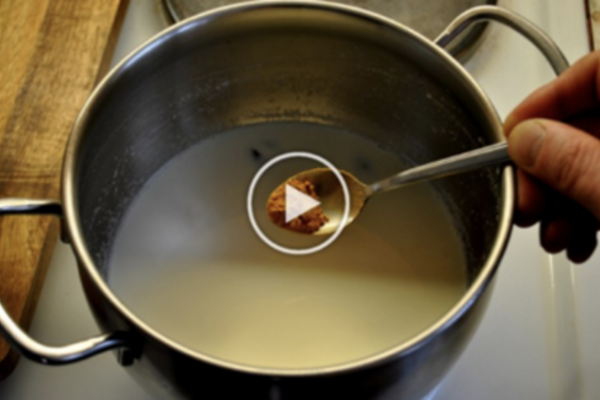Living with type 2 diabetes doesn’t mean you need to give up on enjoying life or food. The key is making smart dietary choices that help keep your blood sugar levels in check. According to the CDC, around 34 million Americans are living with diabetes, and type 2 diabetes makes up the majority of these cases. This means it’s essential to have a solid understanding of what you should and shouldn’t be eating to manage your health effectively.

Let’s break down the do’s and don’ts of a type 2 diabetes diet, so you can make better choices, manage your condition, and enjoy your meals without stress.
What Is Type 2 Diabetes?
Type 2 diabetes occurs when your body doesn’t use insulin effectively. Insulin is a hormone that helps move sugar (glucose) from your bloodstream into your cells to be used as energy. If you have type 2 diabetes, your body either resists the effects of insulin or doesn’t produce enough, causing blood sugar levels to rise. Over time, this can lead to serious health issues like heart disease, kidney disease, and nerve damage.
But don’t worry—eating the right foods can help you keep your blood sugar in a healthy range.
Do’s of a Type 2 Diabetes Diet
1. Do Eat Fiber-Rich Foods
One of the best things you can do for your body is to eat more fiber. Fiber helps slow the absorption of sugar, keeping your blood sugar levels steady. It also aids digestion and can help with weight management, which is key for controlling type 2 diabetes.
Examples of fiber-rich foods:
- Whole grains (brown rice, oats, quinoa)
- Vegetables (broccoli, spinach, carrots)
- Legumes (beans, lentils, chickpeas)
- Fruits (apples, berries, oranges)
2. Do Include Lean Proteins
Protein is an important part of a healthy diet and can help you feel full, reducing cravings for sugary snacks. Opt for lean proteins that won’t add unnecessary fats to your diet.
Examples of lean proteins:
- Skinless chicken breast
- Turkey
- Fish (salmon, tuna, mackerel)
- Tofu and plant-based proteins
- Eggs
3. Do Choose Healthy Fats
Contrary to what some people believe, not all fats are bad! In fact, healthy fats can improve heart health, which is especially important for people with type 2 diabetes.
Examples of healthy fats:
- Avocados
- Nuts and seeds (almonds, chia seeds)
- Olive oil
- Fatty fish (rich in omega-3s)
4. Do Monitor Your Carbohydrate Intake
Carbohydrates have a significant impact on your blood sugar levels. But that doesn’t mean you need to cut them out entirely—just make smarter choices. Focus on complex carbohydrates that break down slowly and provide long-lasting energy.
Examples of complex carbs:
- Whole wheat bread
- Sweet potatoes
- Brown rice
- Barley
5. Do Drink Plenty of Water
Staying hydrated helps your kidneys flush out excess sugar from your body. Water is always the best option—no need for sugary sodas or energy drinks that spike your blood sugar levels.
Tip: Try infusing your water with lemon, cucumber, or mint for added flavor.
Don’ts of a Type 2 Diabetes Diet
1. Don’t Eat Refined Sugars
This might seem obvious, but it’s worth mentioning—refined sugars cause a rapid spike in your blood sugar levels and should be avoided. This includes sugary snacks, desserts, and drinks.
Examples of foods to avoid:
- Sodas and sugary drinks
- Candies and chocolates
- Pastries and cakes
- Ice cream
2. Don’t Eat Processed Foods
Processed foods often contain hidden sugars, unhealthy fats, and excess sodium. They can quickly derail your healthy eating efforts, so try to avoid pre-packaged meals and snacks as much as possible.
Examples of processed foods to avoid:
- Packaged snacks (chips, crackers)
- Frozen meals
- Processed meats (bacon, sausages)
- Sugary cereals
3. Don’t Skip Meals
Skipping meals can lead to overeating later in the day and cause your blood sugar levels to fluctuate. Instead of skipping meals, aim for balanced, smaller meals throughout the day to keep your energy levels steady.
Tip: Keep healthy snacks like nuts or fresh fruit on hand to prevent hunger between meals.
4. Don’t Overdo It on Carbs
While carbs are an important part of a balanced diet, eating too many can cause your blood sugar to spike. Even healthy carbs like whole grains and fruits need to be consumed in moderation. Portion control is key!
Tip: Use the plate method: Fill half your plate with non-starchy vegetables, one-quarter with lean protein, and one-quarter with whole grains or starchy vegetables.
5. Don’t Drink Sugary Beverages
Sugary drinks are one of the quickest ways to spike your blood sugar levels. Sodas, fruit juices, and even flavored coffees can pack a serious sugar punch, so stick to water, unsweetened tea, or black coffee.
Example: A 12-ounce can of soda can have more than 39 grams of sugar, which is equal to almost 10 teaspoons!
Creating a Balanced Meal Plan
Creating a balanced meal plan is a great way to stay on track with your type 2 diabetes diet. When planning your meals, focus on balance, portion control, and variety. Here’s a simple example of what a day of meals could look like:
Breakfast
- A bowl of oatmeal topped with fresh berries and a sprinkle of chia seeds.
- A boiled egg on the side for extra protein.
- Unsweetened tea or water.
Lunch
- A salad with spinach, grilled chicken, avocado, and a light olive oil dressing.
- A small whole-grain roll.
- Water or unsweetened iced tea.
Dinner
- Grilled salmon with a side of steamed broccoli and roasted sweet potatoes.
- A small mixed green salad with a lemon vinaigrette.
- Water or herbal tea.
Snack Options
- A handful of almonds.
- A small apple with a tablespoon of peanut butter.
- Carrot sticks with hummus.
Managing Diabetes Beyond Diet
While diet plays a crucial role in managing type 2 diabetes, other lifestyle changes can also have a positive impact. Regular exercise helps improve insulin sensitivity and lowers blood sugar levels, while stress management and getting enough sleep contribute to overall well-being.
Exercise Tips:
- Aim for at least 30 minutes of moderate exercise most days of the week. This could be walking, cycling, swimming, or even dancing!
- Start slow and gradually increase the intensity as you build endurance.
Sleep and Stress:
- Getting 7-9 hours of sleep a night can help improve your body’s ability to use insulin.
- Practice stress-relieving techniques like meditation, yoga, or even deep breathing exercises to manage stress levels.
Take Control of Your Health
Managing type 2 diabetes through diet doesn’t have to be overwhelming. By making small, manageable changes to your eating habits, you can keep your blood sugar levels stable and improve your overall health. Focus on the do’s: eat plenty of fiber, lean protein, and healthy fats, while steering clear of the don’ts like refined sugars and processed foods.
Remember, this isn’t about restriction, but about making smarter choices that empower you to live a healthier, more vibrant life. Start with one change at a time, and before you know it, you’ll be on the road to better diabetes management and well-being.
